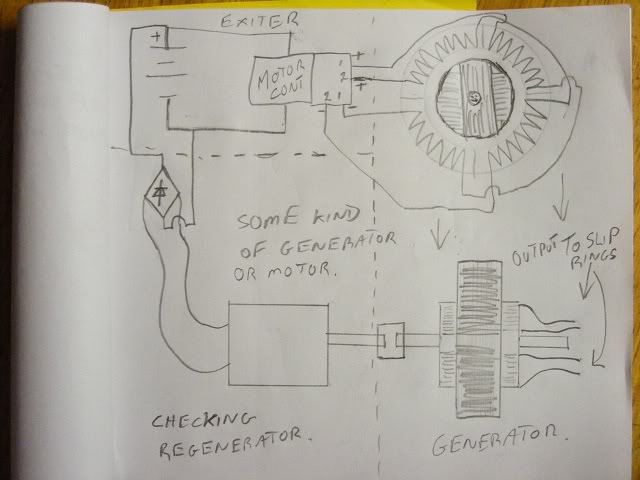I have now added the regenerative circuit to the rotor coils, this should in effect almost double the power of the motor as the magnetism of the recovery from the coils is now being used. I have also arranged the coils in the rotor in a more realistic fashion and added the brushes (relay) on the other side of the rotor.
This is 80% of the circuit and should run in overunity. Even allowing for a mechanical efficiency of the motor being 35% and the overall efficiency of the generator being 70% we should still have a COP of 2.5. Because the output of the generator is running the motor the COP is actually infinity but I don't think people could handle that.
Edit
An error in my calculations, COP still less than 2

This is 80% of the circuit and should run in overunity. Even allowing for a mechanical efficiency of the motor being 35% and the overall efficiency of the generator being 70% we should still have a COP of 2.5. Because the output of the generator is running the motor the COP is actually infinity but I don't think people could handle that.

Edit
An error in my calculations, COP still less than 2
 and this is why we have a trifler coil and not just a bucking coil so that we can collect those spikes. Having said that these spikes are not required to make the system work and are just another benefit. If we don't collect these spikes we will have huge arcs on the commutator and this may be the reason why the electronics on John Bedini's unit could not cope.
and this is why we have a trifler coil and not just a bucking coil so that we can collect those spikes. Having said that these spikes are not required to make the system work and are just another benefit. If we don't collect these spikes we will have huge arcs on the commutator and this may be the reason why the electronics on John Bedini's unit could not cope.
 Farmhand
Farmhand 
 I wouldn't say I'm near but if anyone else can do it so can I, it might just
I wouldn't say I'm near but if anyone else can do it so can I, it might just



Comment